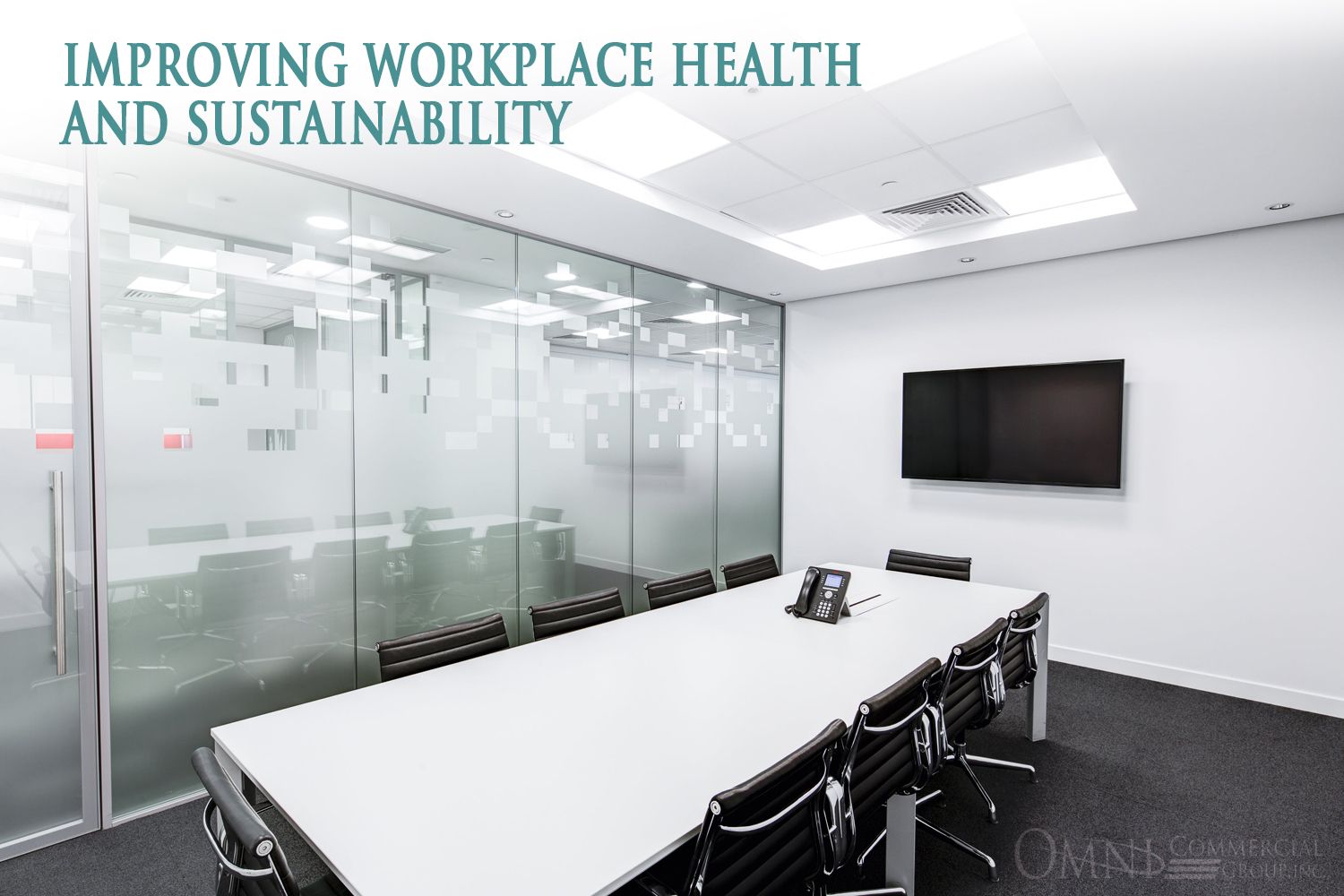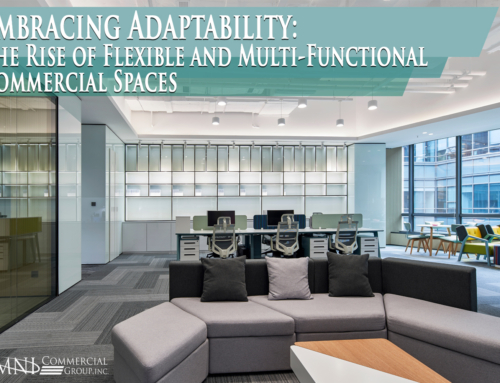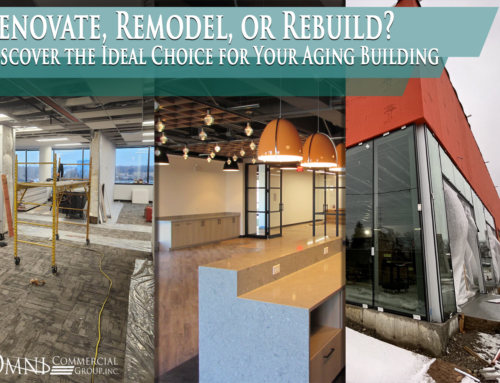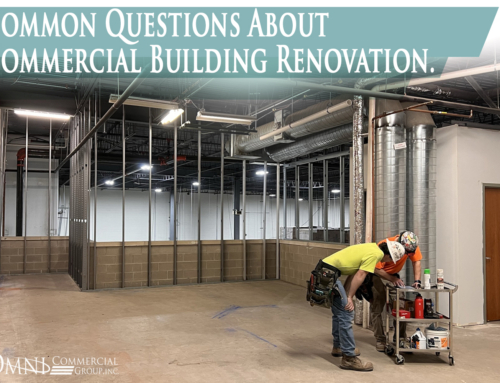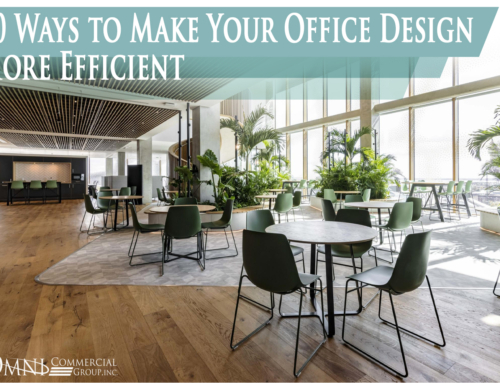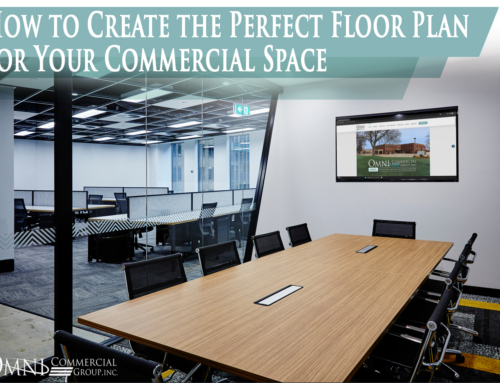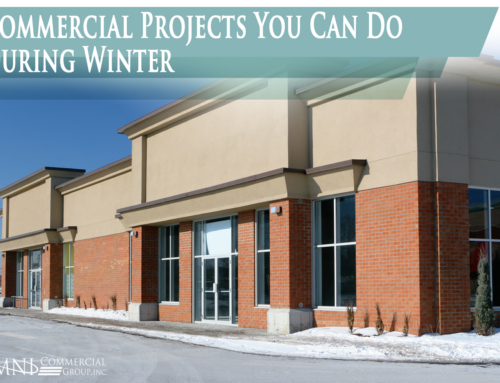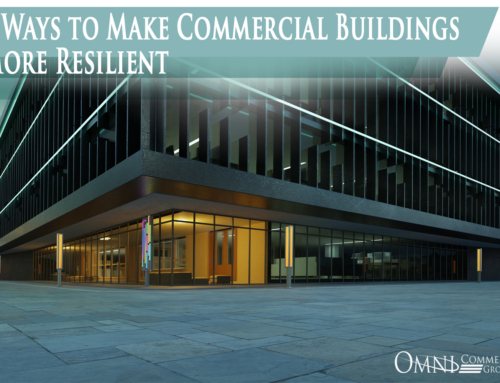The pandemic has shaken the commercial real estate sector, and many are now trying to define the future of office buildings. Businesses in all sectors are rethinking the role of the office space. This new world of virtual and hybrid working models has heightened the need for flexible office spaces, smarter spaces, and healthier buildings. Even though there is no clear vision for the future of the workplace, an office space positioned with the best infrastructure to handle health and wellness will attract the best tenants. With the recent push on sustainability efforts, creating a healthier space, coupled with key green initiatives, will cement your building for the future.
Healthier Spaces
The pandemic heightened awareness on indoor air quality; consequently, new health and safety regulations emerged. Businesses adapted by introducing measures to protect their team and clients/customers, everything from markers/stickers on the floor to using UV lights to disinfect. For the first time, many tenants are asking about ventilation rates and demanding safety measures. One challenge will be to combine the desire for increased collaboration with the need for stricter health and safety regulations. The tenants’ demand for a healthy indoor environment can be created with a green building project. By starting a green project and focusing your efforts on creating a hybrid space, you are simultaneously creating a healthier space.
Hybrid Spaces
The pandemic has also accelerated the demand for more flexibility in office spaces. With employees still working from home, a lot of organizations are seeing a hybrid working model emerge. These more agile office spaces transform the office from a place of where people spend their day to a place where staff collaborate, meet with clients, or retreat. The modern office opens spaces for collaboration and provides areas for employees to privately work when necessary.
In addition, your building’s technology must keep up with the demand without driving up energy costs. It is a delicate balance of providing the necessary technology with the required energy efficient infrastructure. Factoring in a smart office environment into your space will complement your sustainability efforts and give your building more appeal.
Sustainable Buildings
Green building is on the rise and a green retrofit will increase a building’s value by allowing it to operate more efficiently. According to the U.S. Green Building Council, the demand for green building options has grown. The USGBC reported, “In fact, LEED registered projects spiked to more than 69,000 in 2019 from less than 300 registrations in 2006.” What does a green retrofit project involve? Many of these projects focus on reducing energy consumption by upgrading lighting systems, HVAC systems, cutting water consumption, and reducing waste. However, with a green project, the selection of key sustainable materials is used from the flooring type, wallcoverings, and insulation. It is maximizing the space to incorporate natural lighting for health and wellbeing. Any green building project that reduces energy consumption and the related costs will provide long-term savings to building owners and boost a building’s competitive edge.
Conclusion
The pandemic has accelerated green building initiatives in the commercial real estate environment. When you make your property investment sustainable, you are creating a healthier space that will appeal to your future tenants and the environment. If you are having trouble considering how to start your green project, contact Omni Commercial Group. We would love to help you analyze your current space and design solutions to get you started!

